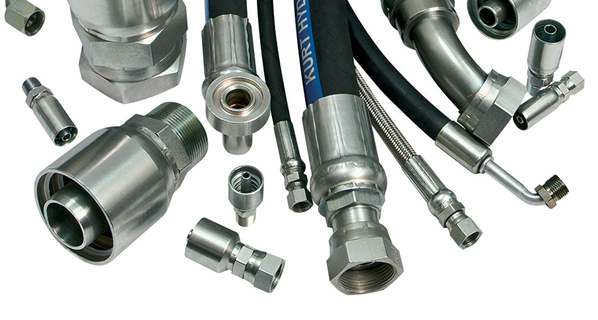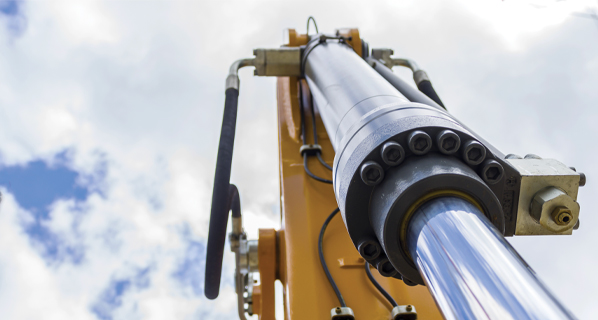Raising the bar – Flow Controls: If in Doubt…
By Dan Helgerson, Fluid Power Journal Technical Editor—
It’s probably the case that a high percentage of those reading this article have designed or installed a fluid power system. And I would venture a guess that only a small percentage of you thought that using a flow control wasted energy.
After reading this article, you may never again specify or install a flow control without a twinge of guilt reminding you that you are wasting energy.
I am not suggesting that we eliminate flow control altogether. One of the beauties of fluid power is that we can regulate the speed of linear and rotary functions from a single power source. This requires some type of flow modulation. What concerns me is that we consider the energy consumed by the control as part of the cost of using fluid power, and we don’t take into consideration the impact of our choices on the industry and the cost of operation.
There is no such thing as an energy-efficient restrictive flow control. A system that requires flow control will always have more flow and pressure (power) than needed, and the excess is lost as wasted energy. When using restrictive flow controls, we can, at best, try to limit the waste. The fluid leaving a pump or compressor is charged with energy. This energy must be used for work, or it becomes wasted energy.
Pneumatics and hydraulics have significant differences in the way energy is lost when using flow control. The pneumatic loss is more subtle and often more expensive than with hydraulics. You are not likely to burn your hand on a pneumatic needle valve, but I’ve seen the paint burn off a flow control in a hydraulic system. With hydraulics, the wasted energy can have a dramatic and immediate impact, while pneumatic inefficiency tends to lurk in the background.
The difference is in the way the energy is put into the fluid. Hydraulics is a sort of “pay-as-you-go” system; there is usually no energy charge in the fluid until we begin to use it. With pneumatics, we charge the fluid with energy and then store it in a receiver for future use. When we waste hydraulic energy, it immediately turns to heat, and we have to deal with it. When we squander our stash of stored air molecules, it can go unnoticed.
I was once invited into a manufacturing facility where they make threaded brass parts. They have a number of pneumatic presses that secure a ferrule into a fitting. The press operators used to place the ferrule into the fitting and quickly move their fingers out of the way while they activated the press. As a safety measure, the company decided to use a horizontally mounted air cylinder to slide the ferrules into place, preventing the operators from endangering their appendages. The ferrules weigh about 2 ounces. Someone (I am hoping it was not a fluid power professional) had selected cylinders with 2-inch bores to push the ferrules into position. There were directional valves and meter-out flow controls. The system worked quite well, and everyone was happy.
I noticed that each machine had a pressure regulator with a gauge. The pressure was set at 100 psi. Think about that for a moment. Blaise Pascal discovered that force equals the fluid pressure times the area on which the pressure is acting: F = PA. The area of a 2-inch bore cylinder is 3.14 square inches; 100 psi times 3.14 square inches equals 314 pounds of force!
Did I mention the ferrules weigh 2 ounces? I think it was Isaac Newton who determined that acceleration equals the force divided by the mass: a = F/m. If we have a whole lot of F and not much m, we get a very large a. Unregulated, the cylinder force would have accelerated the ferrules to 194 miles per hour by the time it reached the end of the 6-inch stroke. To prevent the operator at the next work station from needing to constantly remove the imbedded brass ferrules, the meter-out flow controls were used to slow the system down. It worked great!
However, the air system supplied 313 pounds more force than was required. In energy terms, our fluid power customer used up 313 times more of his stored air molecules than was necessary to get the job done. The flow controls did not limit the amount of energy that was used. It simply slowed down the rate at which the energy was used. Once the cylinder reached the end of its stroke, the energy flow continued until the pressure in the cylinder reached 100 psi.
A company I worked with once sold a fixed displacement pump that produced twice the flow required for a street-sweeping machine. When the problem was discovered, one of our countermen gave the customer a 50/50 restrictive flow divider to fix the problem. He told the customer that half of the fluid would now be diverted to the reservoir, then the system should work correctly. The first report we received was that things were great and the customer was pleased at the easy fix. But soon after, a call came that the system was overheating.
What the counterman did not understand is that a positive displacement pump is a relatively unintelligent device. All it knows is that it is being driven by a prime mover to push out fluid against a resistance. It has no idea how much fluid is needed or how big the resistance is. It will push until something gives way or until it reaches the limits of the prime mover. If we add any type of restrictive flow control to the fluid stream, the pump still has to push the fluid against the resistive load, which energizes all the fluid. The energized fluid that does not perform useful work releases its energy in the form of heat at the location where the pressure is reduced. In the case of the street sweeper, about 11 gallons/minute at 1,500 psi were being released into the already undersized reservoir, adding 425 BTU/minute.
Going back to the overpowered ferrule transfer system, the energy loss could be mitigated using the existing equipment. The regulators should be turned down to their minimum pressure. The meter = out flow controls could then be used to tune the system.
How do we deal with the street sweeper? We should try and apply the correct pump, but sometimes that’s not practical. There is a way to divert the extra fluid to the reservoir without wasting so much energy: a fixed displacement transformer (FDT). If we had directed the flow from the 22-gallon pump on the street sweeper through a 50/50 FDT, something very different would have happened. Half the flow would be directed to the work and half to the reservoir as before. But this time the extra fluid would boost the pressure in the working fluid. The result would be resistive pressure of only 750 psi applied to the total flow. All the fluid would be doing useful work, so the only wasted energy would be what’s used to rotate the FDT.
If you would like to know more about using pressure regulators as energy savers or displacement transformers to maximize efficiency, please contact me by commenting on this article.
Share this information.
Related Posts

Positive Drug Tests Down Except Marijuana, Quest Reports

Kurt Announces Dayco Hydraulics Takeover

This Week at OTC: Motion Highlights Martin and Danfoss Products

TSN Technology Boosts Digital Manufacturing

The Impact of Smart Manufacturing on Maintenance Practices

Vertical Integration: Electronic Load Sensing for Hydraulic Pumps
Get Our Enews!
Fluid Power Journal Resources

